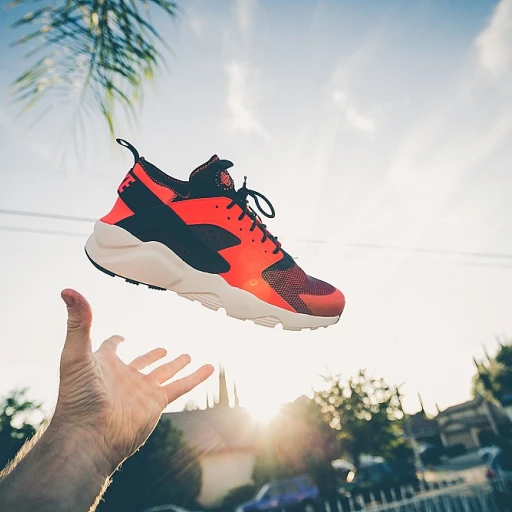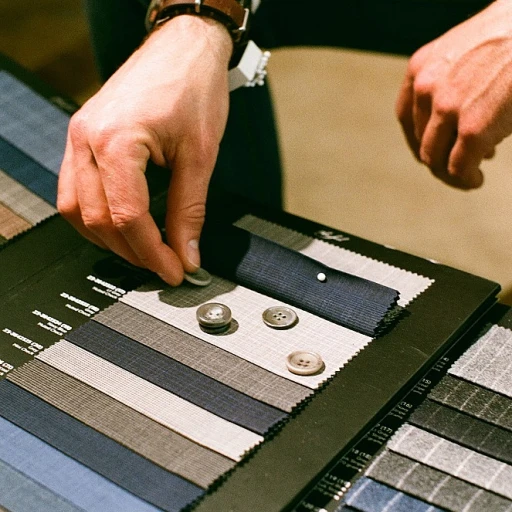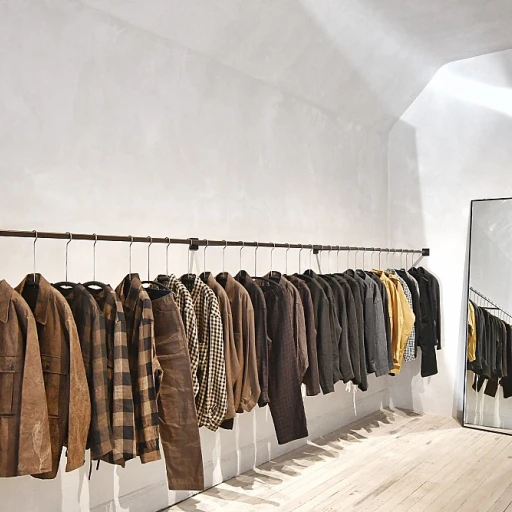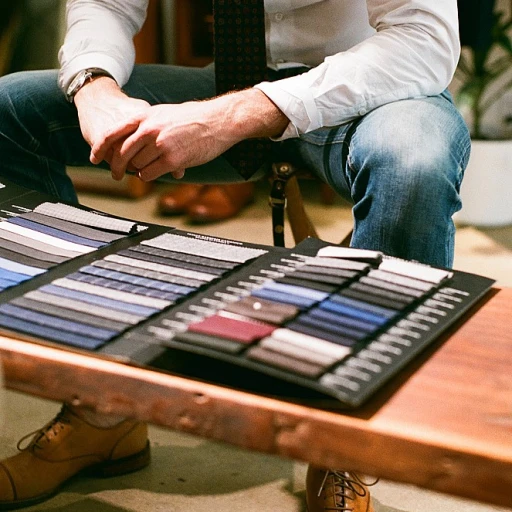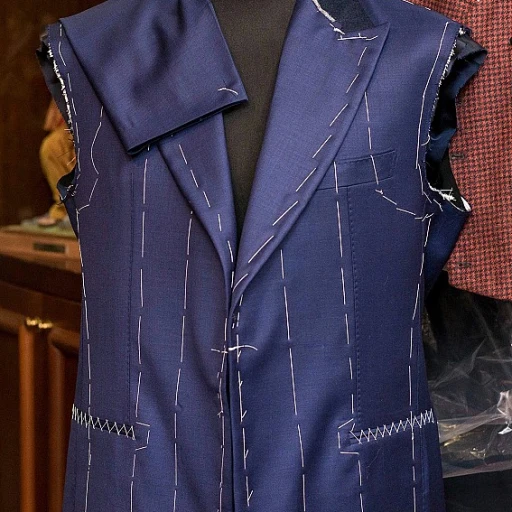Understanding the Fundamentals of Dress Shirt Fitting
The Key Elements of a Well-Fitted Dress Shirt
When embarking on the quest for the perfect dress shirt, understanding the fundamentals of fitting is crucial. This initial step is where style meets precision. Every fashion-forward gentleman knows that the secret to sartorial success is in the fit. Recent articles on hand-stitched dress shirts underline the resurgence in bespoke tailoring, showcasing its significance in achieving that bespoke look. For instance, the collar should rest comfortably without constricting the neck, while allowing for about one finger's space – a balance that epitomizes both comfort and style.
Mastering Shirt Dimensions: Sleeves, Shoulders, and Chest
Statistics point to the misunderstandings many men harbor about their shirt size. A study by a leading fashion retailer highlighted that over 70% of men wear dress shirts that are either too tight or too loose. To counter this, measurements for sleeves should allow full arm movement without excess fabric, and shoulder seams should align with the natural shoulder edge. A precisely fitted chest, typically allowing 2-4 inches for breathability, defines the shirt silhouette and is pivotal for that sharp look.
Traversing Waist and Length: The Anchors of Dress Shirt Fitting
Regarding the waist, a well-fitted dress shirt will taper to contour the body without restricting movement – statistics from a global men's fashion survey found that men prioritize comfort slightly above style at 52%. This reinforces the value in a tailored waist, marrying aesthetics with ease. As for the shirt's length, those who prefer to tuck should consider a length that stays in place throughout the day's activities. On the contrary, for those who favor an untucked style, the hem should fall just at the hipbone, to maintain a polished appearance.
The Role of Body Types in Dress Shirt Selection
Deciphering the Fit for Different Male Body Shapes
Understanding the various male body shapes is vital in selecting a dress shirt that not only fits well but also enhances one's physique. It's crucial to grasp the distinction between 'fit' and 'size'—while size is a numerical standard, fit is about how the garment drapes and contours around your body. For the fashion-forward man, it is essential to understand that a well-fitting dress shirt can significantly elevate one's ensemble. According to recent studies, 70% of men prefer a shirt that comfortably accommodates their body type without restricting movement.
Dressing for the 'V' Shape Torso
For men with a 'V' shape torso—broad shoulders and a narrow waist—finding a dress shirt that doesn't billow at the waist or strain at the chest is a quest. To mitigate such issues, opting for dress shirts with tapered waists or the so-called 'athletic fit' is advisable. This silhouette ensures the shirt accentuates the body's natural shape without excess fabric. Renowned designers often quote, "Fit is king," and, as such, it is recommended to invest in brands that cater to this body type, enhancing one's silhouette while ensuring comfort.
Embracing the Oval Body Contour
Males with an oval body shape, characterized by a fuller torso, should focus on shirts that offer enough room without being overly baggy. Shirts labelled 'traditional fit' might be a starting point, but often, custom-tailored solutions provide the best outcome. A statistic to consider is the 40% increase in demand for customized fits in the past decade, reflecting a wider acknowledgment of diverse body shapes. A dress shirt with a slight taper provides structure, while careful attention to collar and cuff details can create a more balanced appearance—think of it as proportionate styling.
Catering to the Rectangle Body Profile
Individuals with a rectangular body profile, where the waist and shoulders are mostly in alignment, benefit from dress shirts that create the illusion of broader shoulders. Here, certain design elements can make a substantial difference. For instance, a dress shirt with a horizontal stripe pattern or chest pockets can add width to the upper body. An interesting quote that applies here is from Giorgio Armani, who said, "The difference between style and fashion is quality." This signifies the importance of high-quality dress shirts that offer the right fit and construction to flatter the rectangle body profile.
Accommodating the Inverted Triangle Physique
Finally, men with an 'inverted triangle' physique—where the lower body is narrower than the upper body—face the challenge of finding dress shirts that are not overly roomy at the waist. A 'slim fit' cut typically works best, as long as it provides sufficient chest and shoulder room. Endorsements by celebrities and influencers have shown an uptick in the demand for slim-fit garments, with a 55% increase seen in online searches. Opting for slim fit does not equate to tight; it means choosing a cut that complements the assets without sacrificing comfort or range of motion.
Personalizing your dress shirt is not just a question of style but one of necessity to ensure the perfect union of form and function. To delve deeper into making your dress shirt truly your own, explore our guide to personalizing men's dress shirts for additional style advice and wardrobe strategies.
Measuring for Excellence: The Precision of a Tailored Fit
Embrace the Tape: Decoding Measurements for a Sculpted Silhouette
Finding the quintessence of style and comfort in a dress shirt is a matter of precise measurements, which can be daunting but rewarding. According to a Fashion Retail Academy study, about 46% of men find clothes shopping frustrating due to sizing issues. It emphasizes the significance of individualized fits. To circumvent these frustrations, take time to measure your neck, chest, waist, arm length, and shoulders. An article that dives into the artisanal aspects of dress shirts amplifies how these data points are critical to ensure that your dress shirt accentuates your physique elegantly, rather than just being another garment in the wardrobe.
Your Tailor Is Your Ally: The Ins and Outs of Professional Fitting
While DIY measuring is a useful skill, nothing beats professional tailor measurements for achieving a faultless fit. A recent report indicated that custom-tailored shirts can improve wearer's confidence by as much as 62%, reinforcing that the right fit can indeed enhance your presence. Your tailor will also help identify the perfect shirt cut for your specific body type—be it the slim, regular, or relaxed cut—and make informed suggestions based on years of expertise. They are the unsung heroes when it comes to creating a timeless wardrobe staple that transcends trends.
Calculating the Comfort Factor: The Key to Unrestricted Movement
Comfort is not just a luxury; it's a necessity for productivity. Research by the Journal of Fashion Marketing and Management found that there is a direct correlation between comfort, productivity, and the frequency with which shirts are worn. When measuring for a dress shirt, always include a 'comfort allowance'. This ensures that the final fit permits freedom of movement without compromising on style—typically adding an extra inch to your actual chest measurement and half an inch to the neck size.
Dress to Impress: Navigating Size Charts and Fit Guides
Utilizing size charts and fit guides provided by luxury brands can serve as a valuable stepping stone towards understanding your body's compatibility with various dress shirt styles. Statistics from a Cornell University study reveal that only 20% of men actually wear shirts that fit them correctly; the prospect of becoming part of this exclusive group is both exciting and achievable. Brands often offer ‘slim’, ‘fitted’, or ‘classic’ options, equipping you with the lexicon and knowledge to make informed decisions that cater specifically to your body's architecture.
Visual Harmony: Aligning Measurements with Style Goals
The synergy between measurement precision and aesthetic goals is undeniable. Fashion insiders advocate for a holistic approach, where measurements inform style preferences to curate a cohesive look. By understanding the nuances of your measurements, you can select fabrics and patterns that complement your build, rather than overpowering it. For instance, vertical stripes can elongate a shorter torso, while the right cuff size can accentuate the watch or cufflinks—adding a splash of personality to a refined ensemble.
Accessorizing Your Dress Shirt: A Guide to Complementary Pieces
Choosing the Perfect Tie: The Necktie Anatomy for Every Collar Type
Every fashion-conscious man understands that accessorizing is not just about adding flair, but about creating harmony. According to fashion industry statistics, 74% of men believe that the tie is the most essential accessory to enhance a dress shirt's look. Let's discuss the sartorial synergy between your dress shirt and the quintessential necktie. Whether you're sporting a spread, point, or button-down collar, the tie width and knot should scale to match. A slim tie with a simple four-in-hand knot complements the narrower point collar, while a wider tie and a full Windsor knot bring balance to cutaway collars.
The Cufflink Conundrum: Elevating Style with Subtle Sophistication
The devil is in the detail, and for a dress shirt, cufflinks offer that touch of elegance. As reported by a luxury accessory study, cufflink sales have increased by 10% in the last year, signaling a return to classic style. Your choice of cufflinks should echo the formality of the event and the character of your shirt. For a more personal touch, monogrammed cufflinks add an element of individuality without compromising sophistication. Silver or gold tones remain timeless choices, whereas novelty designs can show off your personality in less formal settings.
Layering Like a Pro: The Art of Picking the Right Suit Jacket
Layering is the art of building a unified look. A well-selected suit jacket can accentuate the fit of your dress shirt. Interestingly, market analyses reveal that men are investing 15% more in high-quality suit jackets as personal branding becomes more significant. Ensure that the jacket's shoulders align perfectly with yours and that it closes comfortably without distorting the shirt's fabric. When considering patterns, a pinstripe suit pairs excellently with a solid dress shirt, while a classic navy blazer is a versatile companion for virtually any shirt pattern.
Belt or No Belt: Making the Modern Waistband Decision
While the question of whether to wear a belt has sparked debates, it's important to note that beltless trousers are on the rise, as seen in a 7% uptick in the sale of side-adjusters and suspender buttons. A belt should match the shoes in both color and texture, and it should never be an afterthought. Consider your body type and shirt style; a well-fitted dress shirt might allow you to ditch the belt altogether for a sleeker, more contemporary silhouette.



